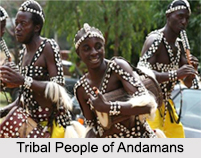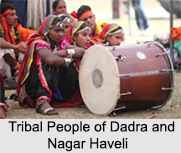 Demography of Indian Union Territories clearly defines the population and its growth, development of infrastructure, the GDP growth and the literacy rate. Out of these, the cultural and the social amalgamation are the major concerns here.
Demography of Indian Union Territories clearly defines the population and its growth, development of infrastructure, the GDP growth and the literacy rate. Out of these, the cultural and the social amalgamation are the major concerns here.
Demography of Andaman and Nicobar Islands
Andaman and Nicobar Islands have 379,944 people, of which 202,330 were male and 177,614 were female. The sex ratio was 878 females per 1,000 males. Only 10% of the population lived in Nicobar Islands. The economy of Andaman and Nicobar Island is dependant of tourism and tribal development. Hindi and English are the official languages of the islands. Bengali is the dominant and most spoken language, with 26% of the population speaking Bengali. The other major languages spoken in the islands are Hindi, Tamil, Telugu, Malayalam, and Nicobarese.
Demography of Chandigarh
Chandigarh had a population of 1,055,450, making for a density of about 9,252 (7,900 in 2001) persons per square kilometer. The males constitute 55% of the population and females 45%. The sex ratio is 818 females for every 1,000 males. Out of which is the third lowest in the country, up from 773 in 2001. The child sex ratio is 880 females per thousand males, up from 819 in 2001. Chandigarh has an average literacy rate of 86.77%, higher than the national average; with male literacy of 90.81% and female literacy of 81.88%. 10.8% of the population is under 6 years of age.
Demography of Dadra and Nagar Haveli
The population of Dadra and Nagar Haveli is concentrated by the Maratha- Konkani and the tribal population. Dadra and Nagar Haveli has a population of 342,853. It has a population density of 698 inhabitants per square kilometer, and its population growth rate over the decade from 2001 to 2011 was 55.5 per cent, which is the highest percentage growth among all Indian states and union territories. The tribal groups of Dadra and Nagar Haveli make up a large part of the population of 62%.
Demography of Daman and Diu
According to the Population Census in 2011, the lowest female to male ratio in India (618 females per thousand males) was recorded in Daman and Diu. The Daman district, with a female to male ratio of .533, is among the lowest of all the districts in India.
Demography of Delhi
The population of Delhi is 16,753,235. Delhi is the national capital of India. The population density was 11,297 persons per square km with a sex ratio of 866 women per 1000 men, and a literacy rate of 86.34%. In 2004, the birth rate, death rate and infant mortality rate per 1000 population were 20.03, 5.59 and 13.08 respectively.
Demography of Lakshadweep
Lakshadweep has a population of 64,429. This gives it a ranking of 627th among the 640 districts in India. It has a population density of about 2,013 inhabitants per square kilometer. Its population growth rate over the decade 2001-2011 was 6.23%. Lakshadweep has a sex ratio of 946 females for every 1000 males, and a literacy rate of 92.28%.
Demography of Puducherry
Puducherry was once the French colony in India now becomes the Hindu dominant area. Hinduism is the major religion with 87% of the population adhering to it. Other religions include Christianity and Islam.



















